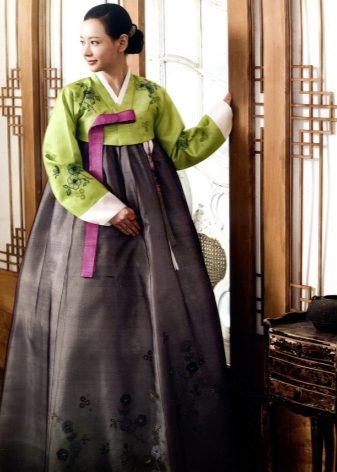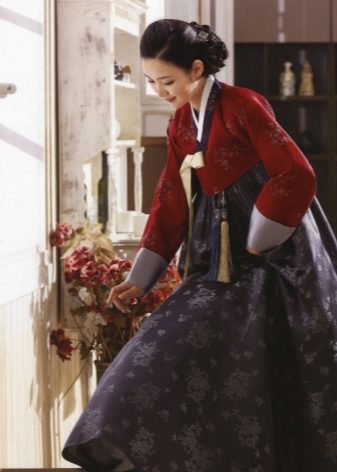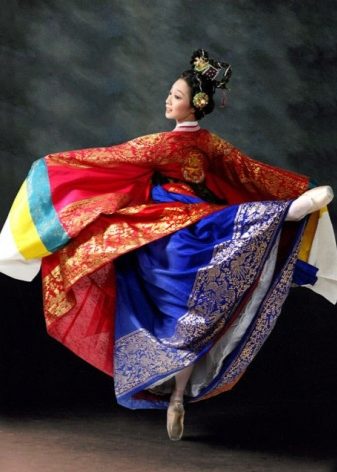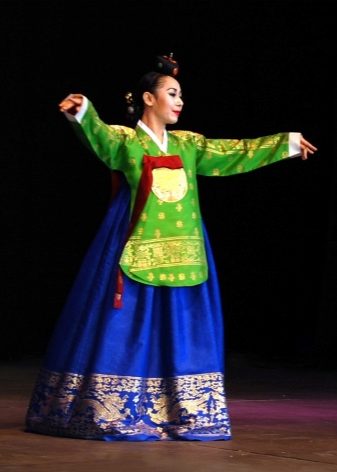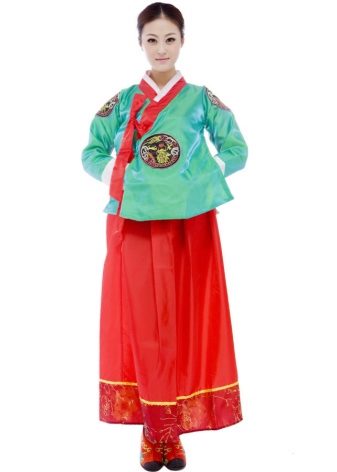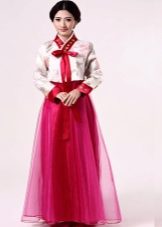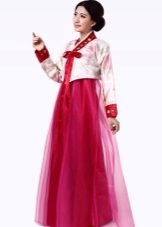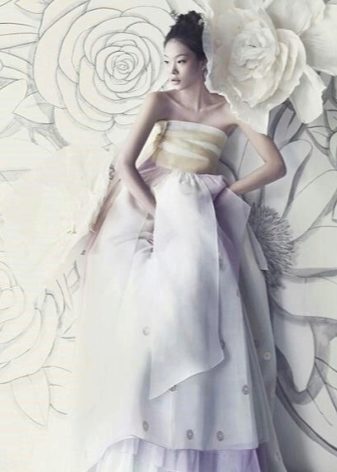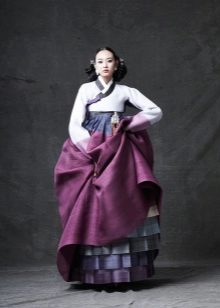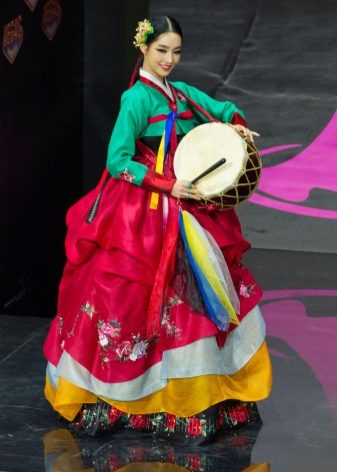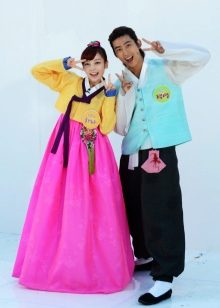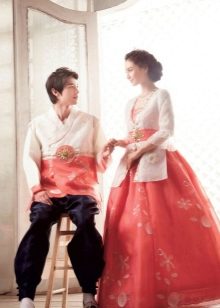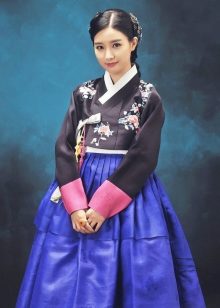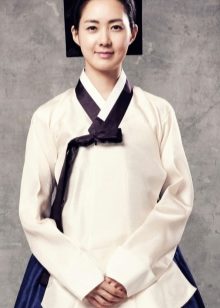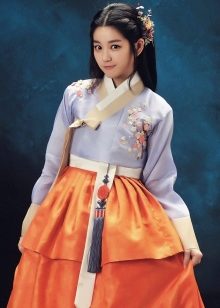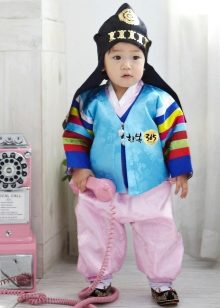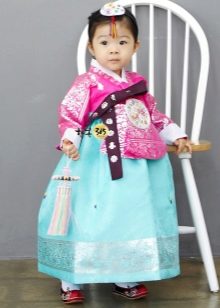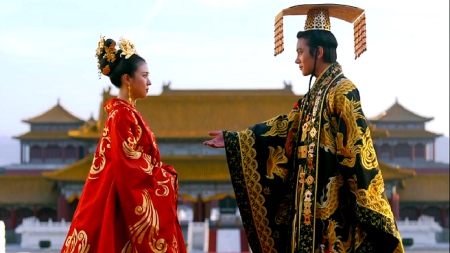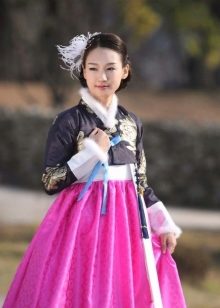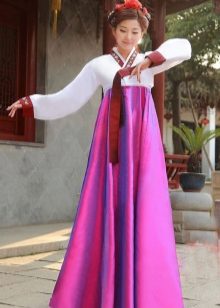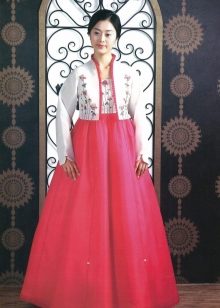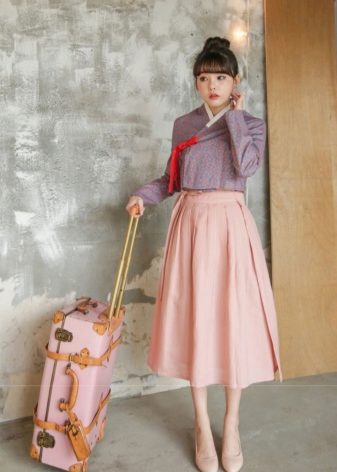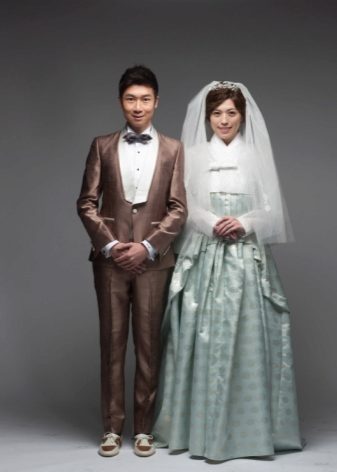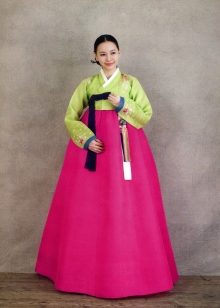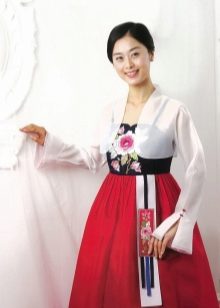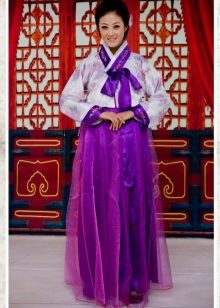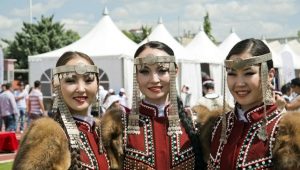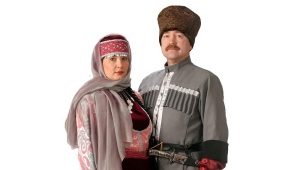Korean national costume
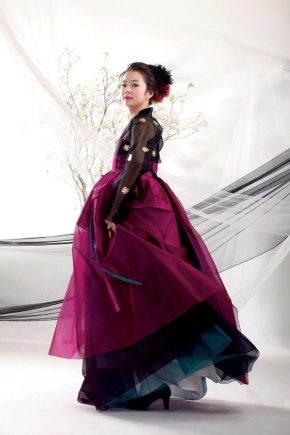
The traditional Korean costume is called hanbok. Residents of Korea call this dress chhosonot. The national outfit of the people of Korea looks very bright, despite the fact that the outfits consist of plain fabrics. For a long time, the costume changed, incorporating the features of European attire.
A bit of history
Initially, the Korean costume resembled nomad outfits from northern Siberia. Hanbob was comfortable and practical. There were many shamanistic motives in his appearance. It was in antiquity that all the basic details of the Korean costume appeared. The motives that adorn the outfit have remained unchanged since that time.
Over time, practical skirts of medium length for women were replaced by skirts to the floor. Jackets also became elongated, to the middle of the thigh, which could tie at the waist.
Mongolian outfits had a great influence on the Korean costume. It happened during the rule of the Koryo dynasty. In those days, the Chogors became shorter, and the skirts were longer. However, the hanbok also had a reciprocal effect on the Mongolian national costume.
But the fashion of the end of the nineteenth century influenced the look of the costume the most.
By the end of the Chosun dynasty, the appearance of the Korean costume for women began to resemble a bell.
Features
The traditional Korean costume is sewn from monophonic fabrics. Its shades differed depending on which class belonged to those who wore it. Brighter outfits were intended for the nobility. Dresses for the rich sewed their fabrics in saturated colors. But ordinary people to wear things from expensive materials is prohibited.
Also, ordinary Koreans were not allowed to wear white things, and light outfits were intended solely for special occasions.
The fabrics, of which the elements of traditional Korean wardrobe were sewn, differed depending on the season. In the summer, Koreans wore lighter options of fine silk or bleached cotton. Silk, of course, was intended for the nobility, while cheap materials were used by ordinary Koreans.
Varieties
The women's national Korean costume consists of a long skirt, a loose-fitting shirt, and a Choghori shirt and jacket. The modern variation of this suit is often used as a school uniform.
Korean traditional skirts are called chhima. Under the bottom before that, the sokchhima was additionally put on - the underskirt.
Men's Korean costume consists of Choghori and Padji. Chogori is a shirt worn by both men and women. Chogori for men are longer and more comfortable. The bottom of the Korean suit consists of padzhi - baggy pants with a free cut. These pants were specially made wide and free, so that they were comfortable to sit on the floor.
Paji are complemented by special ties in the waist. Due to this, they can be worn to a man with any figure. Now padges in Korea are often worn as pants. The same word is called out of habit and any kinds of loose pants.
In the cold season, both men and women complemented the traditional costume of a coat called "Pho". Another type of outerwear - chokki. This is a short jacket that complements the national costume, warming from the cold. Appeared such jackets under the influence of Western fashion.
Also noteworthy is a special Korean vest, which was called magoja. The modern version of magoja is devoid of traditional collar and ties. Vests were worn by both girls and men. The male version can be distinguished from the female by the location of the buttons and the length.Magoja for men is longer, and a row of buttons is on the right.
Children's version of the Korean national costume is used in solemn occasions and now. For example, a child is dressed in a hanbok on his first birthday.
Accessories and shoes
An important role in the traditional dress and accessories play, which complete the image, making it full.
Both men and women in Korea, until the wedding, wore long hair, braiding them in a braid. Hairstyles of married Koreans differed: men did a haircut called a santkhka, tied their hair in a knot, and women did a bun on the back of the head.
In addition, up to the nineteenth century, rich ladies also wore wigs. The larger the wig was, the more beautiful was the image of the girl. But such wigs contradicted the basic Korean values, which were considered modesty and a desire for self-restraint.
At all times, girls often decorated their hair with long hairpins. For solemn occasions there were their accessories. For example, for the wedding, hair was decorated with chokturi, a special headdress that simultaneously supported the hairstyle and decorated it.
In everyday life, girls and women wore chokturi and kachhe - special hats. Men as a headdress used a “cut” horsehair hat, translucent in appearance.
Costumes in the modern world
In the modern world, hanbok is part of Korean history. By changing its appearance, one can trace the history of Korea. In the past few decades, traditional Korean clothing has been completely supplanted by more practical European.
Today, this historical outfit is often used during various celebrations. It celebrates both traditional weddings and national holidays and festivals.
